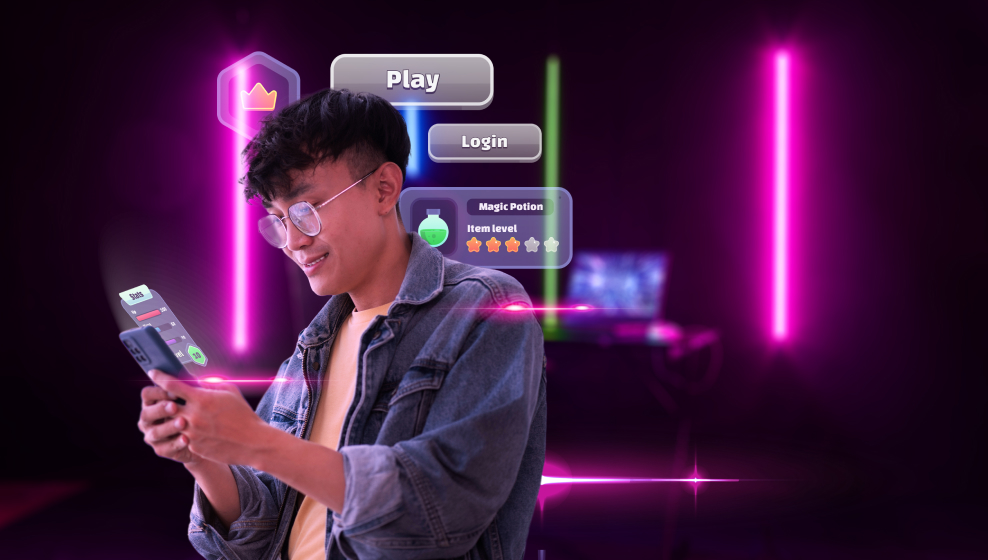What You Need to Know Before Building Your iGaming Platform (Especially If You’re Using Crypto)
Launching a crypto iGaming platform is more than spinning reels and flashy tokens. Between real-time money movement, security risks, legal landmines, and sky-high user expectations, there’s a lot to get right — and even more that can quietly go wrong.
17 April, 2025
What You Need to Know Before Building Your iGaming Platform (Especially If You’re Using Crypto)
So, you’re planning to build an iGaming platform. Maybe it’s a crypto casino, maybe a sports betting app, maybe something in between.
Either way – you’ve got a killer idea, maybe even a few games lined up, and now you’re wondering: “How hard can it be?”
Well, iGaming is one of those spaces that looks simple from the outside, but once you’re in, you realize it’s a blend of real-time finance, legal landmines, and a huge need for speed and trust. And once crypto enters the chat? Even more so.
This isn’t meant to scare you off, but if you’re going to do it, you need to do it right. And that means being aware of what really goes into building a successful platform, beyond flashy animations or adding Bitcoin as a payment option.
So, let’s talk about what most people overlook.
1. Crypto Integration: It’s More Than a Payment Method

Accepting crypto is one thing. Building a product around it is another.
You’ll need to think beyond the usual “Pay with BTC” button:
- Which chains are you supporting? (ETH? BTC? USDT? All of the above?)
- How are you handling gas fees?
- Is there real-time conversion? What if ETH drops 15% mid-bet?
- How do deposits/withdrawals work? Internal wallet? External?
Players in this space expect speed, transparency, and zero friction. If they’re confused or delayed during a transaction, they’re gone. Probably to a competitor.
2. The Backend Is the Workhorse (Not the Games)
Most people focus on the games – and great games matter. But what makes a platform actually work is what’s behind the scenes:
- Real-time game logic
- Balance updates and transaction tracking
- Bonus logic, loyalty programs, jackpots
- Admin tools to manage users, payouts, and content
A solid backend makes or breaks your ability to scale and run operations smoothly. And when money’s moving around, it has to be right every time.
3. Security Can’t Wait Until the “Later” Phase
This is where too many founders take shortcuts. And it always comes back to bite.
Crypto + gambling = you’re automatically a target. You’ll need:
- End-to-end encryption
- Two-factor authentication
- DDoS protection
- Smart contract audits (if you’re using any)
- Role-based access so only the right people can touch the important stuff
If something breaks, you lose trust. If funds disappear, you’re done. Security isn’t optional, it’s baked in from the start or it’s not at all.
4. Regulation Isn’t a Checkbox – It’s a Moving Target

Planning to launch without thinking about legal? Dangerous game.
Depending on where you operate and where your users are, you’ll need to deal with:
- Gaming licenses (Malta, Curacao, Isle of Man, etc.)
- Crypto regulations (which change often)
- KYC/AML tools for user onboarding
- Different compliance rules for different jurisdictions
Even if you’re planning to start in just one region, the platform should be built flexible enough to support expansion later, without having to tear it apart.
5. User Experience Can Be a Dealbreaker
Players aren’t patient. If they’re confused or slowed down even once, they’ll probably bounce.
Watch out for:
- Messy onboarding
- Overcomplicated wallet UX
- Poor mobile experience
- Confusing bonus systems
- Game lobbies that feel like they belong in 2008
UX in iGaming should feel effortless. Especially with crypto, where trust can be fragile. It should be clear, fast, and ideally, fun.
6. Integrations Will Drive You Crazy If You’re Not Ready
iGaming platforms rarely run in isolation. You’ll likely need:
- Third-party game providers (like Spribe, Evolution, Pragmatic)
- Sportsbook data feeds
- Payment gateways
- Crypto APIs
- Affiliate systems
- Marketing and analytics tools
The problem? Everyone uses different formats, tokens, and flows. Without a modular architecture and flexible integration layer, adding or changing any partner becomes a nightmare.
Build it right from the start, and you’ll thank yourself later.
7. Scaling Is Where Things Get Real

Launching the platform is one thing. But what happens when 10,000 players hit your servers during a big match?
Or when your traffic doubles overnight after an influencer shoutout?
Some platforms crumble. Others barely notice. The difference? Scalable architecture, automated load handling, real-time monitoring, and a backend that’s built to grow.
Bonus points if your admin panel doesn’t need a dev team just to update bonus offers or block a user.
Wrapping Up:
The iGaming world is exciting. High-growth, high-competition, and full of innovation, especially with crypto entering the picture. But it’s not plug-and-play. Building a platform that actually works (and keeps working) takes deep thinking across tech, design, compliance, and user behavior.
The teams that succeed are the ones who respect the complexity early on and build with the future in mind.
If you’re serious about launching, partner with people who live and breathe this stuff – because shortcuts here are expensive later.
Let's work together to make your project a success
Contact usLast News
Thank you!
We’ve received your contact request and will contact you soon
Something went wrong
We couldn’t receive your contact request. Please try again later.